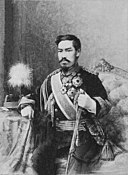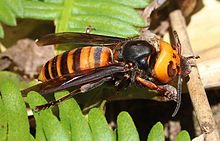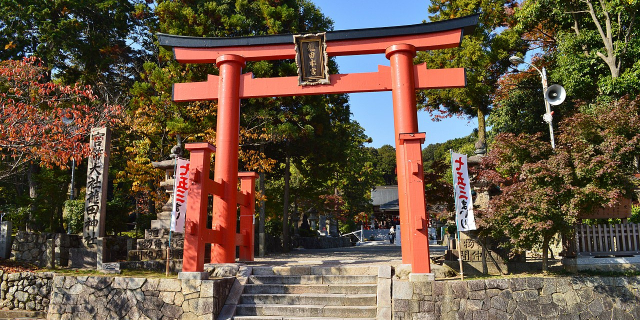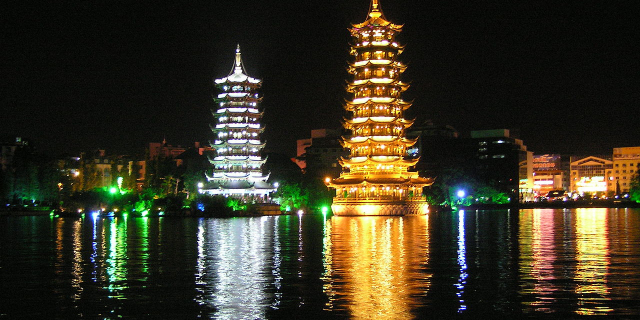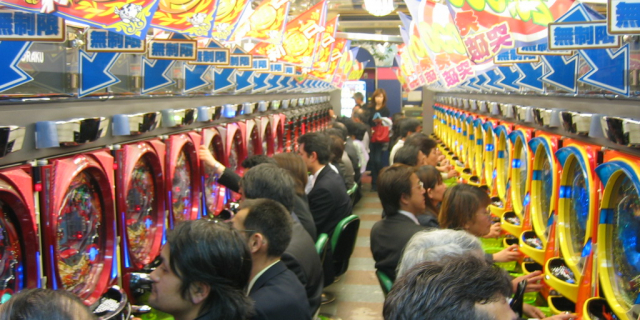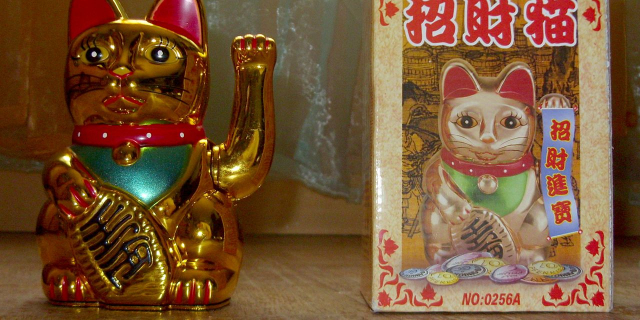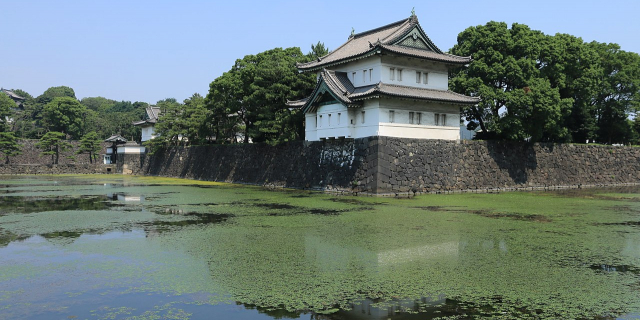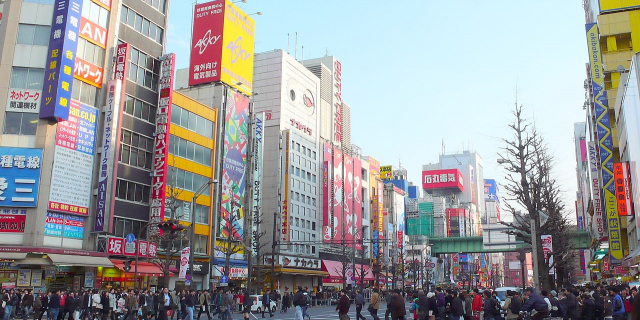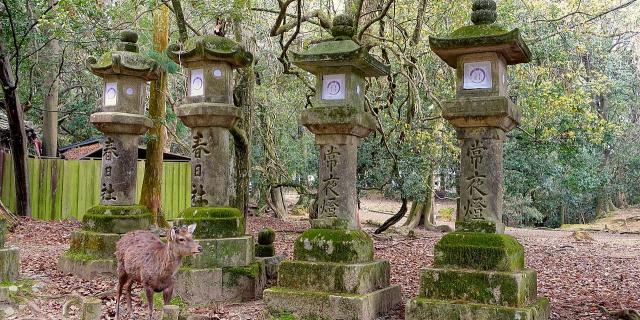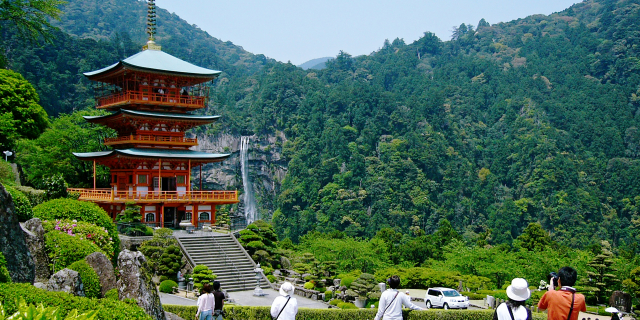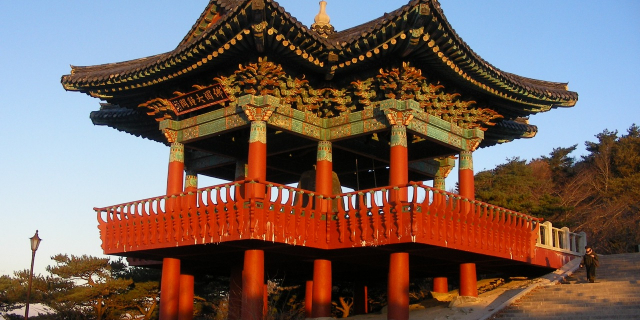日本
JapanContext of Japan
Japan (Japanese: 日本, [ɲihoɴ] (listen), Nippon or Nihon, and formally 日本国, Nihonkoku) is an island country in East Asia. It is situated in the northwest Pacific Ocean and is bordered on the west by the Sea of Japan, extending from the Sea of Okhotsk in the north toward the East China Sea, Philippine Sea, and Taiwan in the south. Japan is a part of the Ring of Fire, and spans an archipelago of 14,1...Read more
Japan (Japanese: 日本, [ɲihoɴ] (listen), Nippon or Nihon, and formally 日本国, Nihonkoku) is an island country in East Asia. It is situated in the northwest Pacific Ocean and is bordered on the west by the Sea of Japan, extending from the Sea of Okhotsk in the north toward the East China Sea, Philippine Sea, and Taiwan in the south. Japan is a part of the Ring of Fire, and spans an archipelago of 14,125 islands, with the five main islands being Hokkaido, Honshu (the "mainland"), Shikoku, Kyushu, and Okinawa. Tokyo is the nation's capital and largest city, followed by Yokohama, Osaka, Nagoya, Sapporo, Fukuoka, Kobe, and Kyoto.
Japan is the eleventh most populous country in the world, as well as one of the most densely populated. About three-fourths of the country's terrain is mountainous, concentrating its highly urbanized population on narrow coastal plains. Japan is divided into 47 administrative prefectures and eight traditional regions. The Greater Tokyo Area is the most populous metropolitan area in the world. Japan has the world's highest life expectancy, though it is experiencing a population decline.
Japan has been inhabited since the Upper Paleolithic period (30,000 BC). Between the 4th and 9th centuries, the kingdoms of Japan became unified under an emperor and the imperial court based in Heian-kyō. Beginning in the 12th century, political power was held by a series of military dictators (shōgun) and feudal lords (daimyō) and enforced by a class of warrior nobility (samurai). After a century-long period of civil war, the country was reunified in 1603 under the Tokugawa shogunate, which enacted an isolationist foreign policy. In 1854, a United States fleet forced Japan to open trade to the West, which led to the end of the shogunate and the restoration of imperial power in 1868. In the Meiji period, the Empire of Japan adopted a Western-modeled constitution and pursued a program of industrialization and modernization. Amidst a rise in militarism and overseas colonization, Japan invaded China in 1937 and entered World War II as an Axis power in 1941. After suffering defeat in the Pacific War and two atomic bombings, Japan surrendered in 1945 and came under a seven-year Allied occupation, during which it adopted a new constitution.
Under the 1947 constitution, Japan has maintained a unitary parliamentary constitutional monarchy with a bicameral legislature, the National Diet. Japan is a developed country and a great power, having one of the highest gross domestic product per capita, with one of the largest domestic product base. Japan has renounced its right to declare war, though it maintains a Self-Defense Force that rank as one of the world's strongest militaries. A global leader in the automotive, robotics, and electronics industries, the country has made significant contributions to science and technology. It is part of multiple major international and intergovernmental institutions.
Japan is considered a cultural superpower as the culture of Japan is well known around the world, including its art, cuisine, film, music, and popular culture, which encompasses prominent manga, anime, and video game industries.
More about Japan
- Currency Japanese yen
- Native name 日本
- Calling code +81
- Internet domain .jp
- Mains voltage 100V/60Hz
- Democracy index 8.13
- Population 124631000
- Area 377972
- Driving side left
- Prehistoric to classical history
 Legendary Emperor Jimmu (神武天皇, Jinmu-tennō)
Legendary Emperor Jimmu (神武天皇, Jinmu-tennō)A Paleolithic culture from around 30,000 BC constitutes the first known habitation of the islands of Japan.[1] This was followed from around 14,500 BC (the start of the Jōmon period) by a Mesolithic to Neolithic semi-sedentary hunter-gatherer culture characterized by pit dwelling and rudimentary agriculture.[2] Clay vessels from the period are among the oldest surviving examples of pottery.[3] From around 700 BC, the Japonic-speaking Yayoi people began to enter the archipelago from the Korean Peninsula,[4][5][6] intermingling with the Jōmon;[6] the Yayoi period saw the introduction of practices including wet-rice farming,[7] a new style of pottery,[8] and metallurgy from China and Korea.[9] According to legend, Emperor Jimmu (grandson of Amaterasu) founded a kingdom in central Japan in 660 BC, beginning a continuous imperial line.[10]
...Read morePrehistoric to classical historyRead less Legendary Emperor Jimmu (神武天皇, Jinmu-tennō)
Legendary Emperor Jimmu (神武天皇, Jinmu-tennō)A Paleolithic culture from around 30,000 BC constitutes the first known habitation of the islands of Japan.[1] This was followed from around 14,500 BC (the start of the Jōmon period) by a Mesolithic to Neolithic semi-sedentary hunter-gatherer culture characterized by pit dwelling and rudimentary agriculture.[2] Clay vessels from the period are among the oldest surviving examples of pottery.[3] From around 700 BC, the Japonic-speaking Yayoi people began to enter the archipelago from the Korean Peninsula,[4][5][6] intermingling with the Jōmon;[6] the Yayoi period saw the introduction of practices including wet-rice farming,[7] a new style of pottery,[8] and metallurgy from China and Korea.[9] According to legend, Emperor Jimmu (grandson of Amaterasu) founded a kingdom in central Japan in 660 BC, beginning a continuous imperial line.[10]
Japan first appears in written history in the Chinese Book of Han, completed in 111 AD. Buddhism was introduced to Japan from Baekje (a Korean kingdom) in 552, but the development of Japanese Buddhism was primarily influenced by China.[11] Despite early resistance, Buddhism was promoted by the ruling class, including figures like Prince Shōtoku, and gained widespread acceptance beginning in the Asuka period (592–710).[12]
The far-reaching Taika Reforms in 645 nationalized all land in Japan, to be distributed equally among cultivators, and ordered the compilation of a household registry as the basis for a new system of taxation.[13] The Jinshin War of 672, a bloody conflict between Prince Ōama and his nephew Prince Ōtomo, became a major catalyst for further administrative reforms.[14] These reforms culminated with the promulgation of the Taihō Code, which consolidated existing statutes and established the structure of the central and subordinate local governments.[13] These legal reforms created the ritsuryō state, a system of Chinese-style centralized government that remained in place for half a millennium.[14]
The Nara period (710–784) marked the emergence of a Japanese state centered on the Imperial Court in Heijō-kyō (modern Nara). The period is characterized by the appearance of a nascent literary culture with the completion of the Kojiki (712) and Nihon Shoki (720), as well as the development of Buddhist-inspired artwork and architecture.[15][16] A smallpox epidemic in 735–737 is believed to have killed as much as one-third of Japan's population.[16][17] In 784, Emperor Kanmu moved the capital, settling on Heian-kyō (modern-day Kyoto) in 794.[16] This marked the beginning of the Heian period (794–1185), during which a distinctly indigenous Japanese culture emerged. Murasaki Shikibu's The Tale of Genji and the lyrics of Japan's national anthem "Kimigayo" were written during this time.[18]
Feudal era Japanese samurai boarding a Mongol vessel during the Mongol invasions of Japan, depicted in the Mōko Shūrai Ekotoba, 1293
Japanese samurai boarding a Mongol vessel during the Mongol invasions of Japan, depicted in the Mōko Shūrai Ekotoba, 1293 Three unifiers of Japan. Left to right: Oda Nobunaga, Toyotomi Hideyoshi and Tokugawa Ieyasu.
Three unifiers of Japan. Left to right: Oda Nobunaga, Toyotomi Hideyoshi and Tokugawa Ieyasu.Japan's feudal era was characterized by the emergence and dominance of a ruling class of warriors, the samurai.[19] In 1185, following the defeat of the Taira clan by the Minamoto clan in the Genpei War, samurai Minamoto no Yoritomo established a military government at Kamakura.[20] After Yoritomo's death, the Hōjō clan came to power as regents for the shōgun.[16] The Zen school of Buddhism was introduced from China in the Kamakura period (1185–1333) and became popular among the samurai class.[21] The Kamakura shogunate repelled Mongol invasions in 1274 and 1281 but was eventually overthrown by Emperor Go-Daigo.[16] Go-Daigo was defeated by Ashikaga Takauji in 1336, beginning the Muromachi period (1336–1573).[22] The succeeding Ashikaga shogunate failed to control the feudal warlords (daimyō) and a civil war began in 1467, opening the century-long Sengoku period ("Warring States").[23]
During the 16th century, Portuguese traders and Jesuit missionaries reached Japan for the first time, initiating direct commercial and cultural exchange between Japan and the West.[16][24] Oda Nobunaga used European technology and firearms to conquer many other daimyō;[25] his consolidation of power began what was known as the Azuchi–Momoyama period.[26] After the death of Nobunaga in 1582, his successor, Toyotomi Hideyoshi, unified the nation in the early 1590s and launched two unsuccessful invasions of Korea in 1592 and 1597.[16]
Tokugawa Ieyasu served as regent for Hideyoshi's son Toyotomi Hideyori and used his position to gain political and military support.[27] When open war broke out, Ieyasu defeated rival clans in the Battle of Sekigahara in 1600. He was appointed shōgun by Emperor Go-Yōzei in 1603 and established the Tokugawa shogunate at Edo (modern Tokyo).[28] The shogunate enacted measures including buke shohatto, as a code of conduct to control the autonomous daimyō,[29] and in 1639 the isolationist sakoku ("closed country") policy that spanned the two and a half centuries of tenuous political unity known as the Edo period (1603–1868).[28][30] Modern Japan's economic growth began in this period, resulting in roads and water transportation routes, as well as financial instruments such as futures contracts, banking and insurance of the Osaka rice brokers.[31] The study of Western sciences (rangaku) continued through contact with the Dutch enclave in Nagasaki.[28] The Edo period gave rise to kokugaku ("national studies"), the study of Japan by the Japanese.[32]
Modern eraEmperor Meiji (明治天皇, Meiji-tennō); 1852–1912The Japanese Empire in 1942The United States Navy sent Commodore Matthew C. Perry to force the opening of Japan to the outside world. Arriving at Uraga with four "Black Ships" in July 1853, the Perry Expedition resulted in the March 1854 Convention of Kanagawa.[28] Subsequent similar treaties with other Western countries brought economic and political crises.[28] The resignation of the shōgun led to the Boshin War and the establishment of a centralized state nominally unified under the emperor (the Meiji Restoration).[33] Adopting Western political, judicial, and military institutions, the Cabinet organized the Privy Council, introduced the Meiji Constitution (November 29, 1890), and assembled the Imperial Diet.[34] During the Meiji period (1868–1912), the Empire of Japan emerged as the most developed nation in Asia and as an industrialized world power that pursued military conflict to expand its sphere of influence.[35][36][37] After victories in the First Sino-Japanese War (1894–1895) and the Russo-Japanese War (1904–1905), Japan gained control of Taiwan, Korea and the southern half of Sakhalin.[38][34] The Japanese population doubled from 35 million in 1873 to 70 million by 1935, with a significant shift to urbanization.[39][40]
The early 20th century saw a period of Taishō democracy (1912–1926) overshadowed by increasing expansionism and militarization.[41][42] World War I allowed Japan, which joined the side of the victorious Allies, to capture German possessions in the Pacific and in China.[42] The 1920s saw a political shift towards statism, a period of lawlessness following the 1923 Great Tokyo Earthquake, the passing of laws against political dissent, and a series of attempted coups.[40][43][44] This process accelerated during the 1930s, spawning several radical nationalist groups that shared a hostility to liberal democracy and a dedication to expansion in Asia. In 1931, Japan invaded and occupied Manchuria; following international condemnation of the occupation, it resigned from the League of Nations two years later.[45] In 1936, Japan signed the Anti-Comintern Pact with Nazi Germany; the 1940 Tripartite Pact made it one of the Axis Powers.[40]
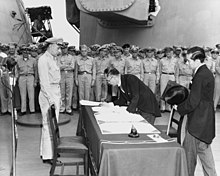 Japan's imperial ambitions ended on September 2, 1945, with the country's surrender to the Allies.
Japan's imperial ambitions ended on September 2, 1945, with the country's surrender to the Allies.The Empire of Japan invaded other parts of China in 1937, precipitating the Second Sino-Japanese War (1937–1945).[46] In 1940, the Empire invaded French Indochina, after which the United States placed an oil embargo on Japan.[40][47] On December 7–8, 1941, Japanese forces carried out surprise attacks on Pearl Harbor, as well as on British forces in Malaya, Singapore, and Hong Kong, among others, beginning World War II in the Pacific.[48] Throughout areas occupied by Japan during the war, numerous abuses were committed against local inhabitants, with many forced into sexual slavery.[49] After Allied victories during the next four years, which culminated in the Soviet invasion of Manchuria and the atomic bombings of Hiroshima and Nagasaki in 1945, Japan agreed to an unconditional surrender.[50] The war cost Japan its colonies and millions of lives.[40] The Allies (led by the United States) repatriated millions of Japanese settlers from their former colonies and military camps throughout Asia, largely eliminating the Japanese Empire and its influence over the territories it conquered.[51][52] The Allies convened the International Military Tribunal for the Far East to prosecute Japanese leaders for war crimes.[52]
In 1947, Japan adopted a new constitution emphasizing liberal democratic practices.[52] The Allied occupation ended with the Treaty of San Francisco in 1952,[53] and Japan was granted membership in the United Nations in 1956.[52] A period of record growth propelled Japan to become the second-largest economy in the world;[52] this ended in the mid-1990s after the popping of an asset price bubble, beginning the "Lost Decade".[54] On March 11, 2011, Japan suffered one of the largest earthquakes in its recorded history, triggering the Fukushima Daiichi nuclear disaster.[55] On May 1, 2019, after the historic abdication of Emperor Akihito, his son Naruhito became Emperor, beginning the Reiwa era.[56]
^ Ono, Akira; Sato, Hiroyuki; Tsutsumi, Takashi; Kudo, Yuichiro (2002). "Radiocarbon Dates and Archaeology of the Late Pleistocene in the Japanese Islands". Radiocarbon. 44 (2): 477–494. doi:10.1017/S0033822200031854. ^ Habu, Junko (2004). Ancient Jomon of Japan. Cambridge University Press. p. 43. ISBN 978-0-521-77670-7. ^ "Jōmon Culture (ca. 10,500–ca. 300 B.C.)". Metropolitan Museum of Art. Retrieved August 28, 2020. ^ Wade, Nicholas (May 4, 2011). "Finding on Dialects Casts New Light on the Origins of the Japanese People". The New York Times. ^ Vovin, Alexander (2017). "Origins of the Japanese Language". Oxford Research Encyclopedia of Linguistics. Oxford University Press. doi:10.1093/acrefore/9780199384655.013.277. ISBN 978-0-19-938465-5. ^ a b Watanabe, Yusuke; Naka, Izumi; Khor, Seik-Soon; Sawai, Hiromi; Hitomi, Yuki; Tokunaga, Katsushi; Ohashi, Jun (June 17, 2019). "Analysis of whole Y-chromosome sequences reveals the Japanese population history in the Jomon period". Scientific Reports. 9 (1): 8556. doi:10.1038/s41598-019-44473-z. PMC 6572846. PMID 31209235. ^ "Road of rice plant". National Science Museum of Japan. Archived from the original on April 30, 2011. Retrieved January 15, 2011. ^ "Kofun Period (ca. 300–710)". Metropolitan Museum of Art. Retrieved August 28, 2020. ^ "Yayoi Culture (ca. 300 B.C.–300 A.D.)". Metropolitan Museum of Art. Retrieved August 28, 2020. ^ Hendry, Joy (2012). Understanding Japanese Society. Routledge. p. 9. ISBN 978-1-136-27918-8. ^ Brown, Delmer M.; Hall, John Whitney; Jansen, Marius B.; Shively, Donald H.; Twitchett, Denis (1988). The Cambridge History of Japan. Vol. 1. Cambridge University Press. pp. 140–149, 275. ISBN 978-0-521-22352-2. ^ Beasley, William Gerald (1999). The Japanese Experience: A Short History of Japan. University of California Press. p. 42. ISBN 978-0-520-22560-2. ^ a b Sansom, George (1961). A History of Japan: 1334–1615. Stanford University Press. pp. 57, 68. ISBN 978-0-8047-0525-7. ^ a b Totman, Conrad (2002). A History of Japan. Blackwell. pp. 107–108. ISBN 978-1-4051-2359-4. ^ Totman, Conrad (2002). A History of Japan. Blackwell. pp. 64–79. ISBN 978-1-4051-2359-4. ^ a b c d e f g Henshall, Kenneth (2012). "Of Courtiers and Warriors: Early and Medieval History (710–1600)". A History of Japan: From Stone Age to Superpower. Palgrave Macmillan. pp. 24–52. ISBN 978-0-230-36918-4. ^ Hays, J.N. (2005). Epidemics and pandemics: their impacts on human history. ABC-CLIO. p. 31. ISBN 978-1-85109-658-9. ^ Totman, Conrad (2002). A History of Japan. Blackwell. pp. 79–87, 122–123. ISBN 978-1-4051-2359-4. ^ Leibo, Steven A. (2015). East and Southeast Asia 2015–2016. Rowman & Littlefield Publishers. pp. 99–104. ISBN 978-1-4758-1875-8. ^ Middleton, John (2015). World Monarchies and Dynasties. Routledge. p. 616. ^ Totman, Conrad (2005). A History of Japan (2nd ed.). Blackwell. pp. 106–112. ISBN 978-1-4051-2359-4. ^ Shirane, Haruo (2012). Traditional Japanese Literature: An Anthology, Beginnings to 1600. Columbia University Press. p. 409. ISBN 978-0-231-15730-8. ^ Sansom, George (1961). A History of Japan: 1334–1615. Stanford University Press. pp. 42, 217. ISBN 978-0-8047-0525-7. ^ Lidin, Olof (2005). Tanegashima. Taylor & Francis. ISBN 0-203-47957-2. ^ Brown, Delmer (May 1948). "The impact of firearms on Japanese warfare, 1543–98". The Far Eastern Quarterly. 7 (3): 236–253. doi:10.2307/2048846. JSTOR 2048846. ^ "Azuchi-Momoyama period (1573–1603)". Dallas Museum of Art. Retrieved October 3, 2020. ^ Turnbull, Stephen (2011). Toyotomi Hideyoshi. Osprey Publishing. p. 61. ISBN 978-1-84603-960-7. ^ a b c d e Henshall, Kenneth (2012). "The Closed Country: the Tokugawa Period (1600–1868)". A History of Japan: From Stone Age to Superpower. Palgrave Macmillan. pp. 53–74. ISBN 978-0-230-36918-4. ^ Totman, Conrad (2005). A History of Japan (2nd ed.). Blackwell. pp. 142–143. ISBN 978-1-4051-2359-4. ^ Toby, Ronald P. (1977). "Reopening the Question of Sakoku: Diplomacy in the Legitimation of the Tokugawa Bakufu". Journal of Japanese Studies. 3 (2): 323–363. doi:10.2307/132115. JSTOR 132115. ^ Howe, Christopher (1996). The Origins of Japanese Trade Supremacy. Hurst & Company. pp. 58ff. ISBN 978-1-85065-538-1. ^ Ohtsu, M.; Imanari, Tomio (1999). "Japanese National Values and Confucianism". Japanese Economy. 27 (2): 45–59. doi:10.2753/JES1097-203X270245. ^ Totman, Conrad (2005). A History of Japan (2nd ed.). Blackwell. pp. 289–296. ISBN 978-1-4051-2359-4. ^ a b Henshall, Kenneth (2012). "Building a Modern Nation: the Meiji Period (1868–1912)". A History of Japan: From Stone Age to Superpower. Palgrave Macmillan. pp. 75–107. ISBN 978-0-230-36918-4. ^ McCargo, Duncan (2000). Contemporary Japan. Macmillan. pp. 18–19. ISBN 978-0-333-71000-5. ^ Baran, Paul (1962). The Political Economy of Growth. Monthly Review Press. p. 160. ^ Totman, Conrad (2005). A History of Japan (2nd ed.). Blackwell. pp. 312–314. ISBN 978-1-4051-2359-4. ^ Matsusaka, Y. Tak (2009). "The Japanese Empire". In Tsutsui, William M. (ed.). Companion to Japanese History. Blackwell. pp. 224–241. ISBN 978-1-4051-1690-9. ^ Hiroshi, Shimizu; Hitoshi, Hirakawa (1999). Japan and Singapore in the world economy: Japan's economic advance into Singapore, 1870–1965. Routledge. p. 17. ISBN 978-0-415-19236-1. ^ a b c d e Henshall, Kenneth (2012). "The Excesses of Ambition: the Pacific War and its Lead-Up". A History of Japan: From Stone Age to Superpower. Palgrave Macmillan. pp. 108–141. ISBN 978-0-230-36918-4. ^ Tsuzuki, Chushichi (2011). "Taisho Democracy and the First World War". The Pursuit of Power in Modern Japan 1825–1995. Oxford University Press. doi:10.1093/acprof:oso/9780198205890.001.0001. ISBN 978-0-19-820589-0. ^ a b Ramesh, S (2020). "The Taisho Period (1912–1926): Transition from Democracy to a Military Economy". China's Economic Rise. Palgrave Macmillan. pp. 173–209. ISBN 978-3-030-49811-5. ^ Burnett, M. Troy, ed. (2020). Nationalism Today: Extreme Political Movements around the World. ABC-CLIO. p. 20. ^ Weber, Torsten (2018). Embracing 'Asia' in China and Japan. Palgrave Macmillan. p. 268. ^ "The Japanese Nation: It has a history of feudalism, nationalism, war and now defeat". LIFE. September 17, 1945. pp. 109–111. ^ Paine, S. C. M. (2012). The Wars for Asia, 1911–1949. Cambridge University Press. pp. 123–125. ISBN 978-1-139-56087-0. ^ Worth, Roland H. Jr. (1995). No Choice But War: the United States Embargo Against Japan and the Eruption of War in the Pacific. McFarland. pp. 56, 86. ISBN 978-0-7864-0141-3. ^ Bailey, Beth; Farber, David (2019). "Introduction: December 7/8, 1941". Beyond Pearl Harbor: A Pacific History. University Press of Kansas. pp. 1–8. ^ Yōko, Hayashi (1999–2000). "Issues Surrounding the Wartime "Comfort Women"". Review of Japanese Culture and Society. 11/12 (Special Issue): 54–65. JSTOR 42800182. ^ Pape, Robert A. (1993). "Why Japan Surrendered". International Security. 18 (2): 154–201. doi:10.2307/2539100. JSTOR 2539100. ^ Watt, Lori (2010). When Empire Comes Home: Repatriation and Reintegration in Postwar Japan. Harvard University Press. pp. 1–4. ISBN 978-0-674-05598-8. ^ a b c d e Henshall, Kenneth (2012). "A Phoenix from the Ashes: Postwar Successes and Beyond". A History of Japan: From Stone Age to Superpower. Palgrave Macmillan. pp. 142–180. ISBN 978-0-230-36918-4. ^ Coleman, Joseph (March 6, 2007). "'52 coup plot bid to rearm Japan: CIA". The Japan Times. ^ Saxonhouse, Gary; Stern, Robert (2003). "The bubble and the lost decade". The World Economy. 26 (3): 267–281. doi:10.1111/1467-9701.00522. hdl:2027.42/71597. ^ Fackler, Martin; Drew, Kevin (March 11, 2011). "Devastation as Tsunami Crashes Into Japan". The New York Times. Archived from the original on January 3, 2022. ^ "Japan's emperor thanks country, prays for peace before abdication". Nikkei Asian Review. April 30, 2019.
- Stay safe
 Police boxes (交番 kōban)Stay safeRead less
Police boxes (交番 kōban)Stay safeRead less Police boxes (交番 kōban)Map symbols for a police box (X) and police station (circled X)
Police boxes (交番 kōban)Map symbols for a police box (X) and police station (circled X)Japan is one of the safest countries in the world, with crime rates significantly lower than that of most countries.
Kōban (交番), usually translated as police boxes, can be found in nearly every neighborhood, identified by a flashing red light. The police are generally helpful (although they rarely speak English), so ask if you get lost or have any trouble. They usually have a detailed map of the area around showing not only the difficult-to-understand numbering system but also the names of major buildings to help to find your way. You can report accidents and petty crimes at a kōban, but for serious crimes or other police services, go to a police station (警察署 keisatsusho).
Report any thefts or lost items at the kōban. They have forms in English and Japanese, often referred to as the "Blue Form". For lost items, even cash, filling out this form is not wasted effort, as Japanese people will very often take lost items, even a wallet full of cash, to the kōban. If you happen to find such an item, take it to the kōban. If the item is not claimed within six months, it is yours. If it is claimed, you may be due a reward of 5-15%.
Japan has two emergency numbers. To call the police in an emergency, dial 110 (110番 hyakutoban). To call for an ambulance or fire truck, dial 119. Some Japanese public phones have a red emergency button on the lower panel; press this and then dial. In Tokyo, operators proficient in English and other languages are available; elsewhere, they should usually be able to reach an English translator who will have a three-way conversation with you and the dispatcher. In Tokyo, you can report non-emergencies and get translation in English, Korean, and Chinese from the General Advisory Center at +81 3 3501-0110; it is available M-F 08:30-17:15 except on holidays. Similar services are available from any prefecture's police headquarters by calling #9110 (although in some locations you may need to use a local phone number instead), although fewer foreign languages may be available.
Crimes and scamsPolice and the law
Police in Japan may and do detain people up to 23 days before a prosecutor formally files charges, and you may be subjected to nonstop interrogation during this period. This detention period may be extended for another 23 days each time indefinitely by simply amending the charge. You can hire a lawyer only if somebody outside pays the fees in advance, and your lawyer is not allowed to be present during interrogations. Insist on an interpreter and consular access, and do not fingerprint anything (Japanese equivalent of signing), especially if you do not fully understand what you sign. A signed confession will result in a guilty verdict at your trial.
By far the most common pattern of how foreign tourists end up staring at the cold, yellow walls of a Japanese detention cell is getting drunk and then involved in a fight. Standard police procedure is to detain everybody first and to sort out things later. If anybody accuses you of anything even on the flimsiest grounds, you may be looking at an unpleasant extension to your vacation. Over 99% of criminal trials in Japan end in a conviction, so if your case goes to trial, your conviction is largely a formality, and the main job of the judge is to decide your sentence. If you are convicted of a crime, you will be looking at a first-hand experience of Japan's notoriously harsh prison system.
Japan is exotic and mysterious; what seems strange and even appealing to you during daytime can get obnoxious and annoying to you at night, especially with some booze running through your veins, so control your temper and alcohol level. Police patrol party areas heavily at night and they will be willing to "rescue" a fellow Japanese from a violent foreigner.
Street crime is extremely rare, even for single female travellers late at night, but it is still no excuse to ditch your common sense. Women travelling alone should take care as they would in their home countries and never hitchhike alone.
Pickpocketing does sometimes happen: if you take your usual precautions in crowded places such as trains and at Narita Airport, you should be fine. Women and men on crowded rush-hour trains should be aware of the existence of male chikan (痴漢) and female chijo (痴女) or molesters. Be careful in these trains too, as you could be blamed for such occurrences, and possibly arrested. Some trains have female-only carriages during rush hour in an effort to combat sexual harassment. A lot of heavy drinking goes on in the evenings and occasionally drunks may be a nuisance, although alcohol-related violence is extremely rare.
The infamous yakuza (ヤクザ), the Japanese gangsters, almost never target people not already involved in organized crime. Don't bother them and they will not bother you.
Red-light districts in large cities can be seedy although they are rarely dangerous for visitors, but some smaller backstreet bars and shops that look like normal-looking shops but tout themselves on the street have been known to lay down exorbitant cover charges or drink prices. In some extreme cases, foreigners have reported being drugged at such establishments and then charged as much as ¥700,000 for drinks that they do not remember ordering (notably in the Roppongi and Kabukichō districts of Tokyo). Never go into a place that is suggested by someone that you just met. This goes especially for the street touts (absent in Japan except in places like Kabukichō).
ProstitutionJapan still has one of the most vibrant sex industries in the world. The sex industry in Japan is a place where people enjoy pseudo-sexual activities. The most famous red-light district is Kabukichō (歌舞伎町) in Tokyo's Shinjuku district where many call girl booths and love hotels are located. Some prostitutes will refuse to serve foreign customers, including those who are fluent in Japanese. From 2012 to 2018, the number of Japan infected with HIV fell, but the virus remains a concern, and infection rates for syphilis have been surging, particularly in Tokyo.
Prostitution is illegal in Japan. Prostitution is specifically defined in the law as "sexual intercourse in exchange for money, goods or other benefits. In other words, if you pay for some other "service" and proceed to have sex by "private agreement," the law does not recognize it as prostitution. For some reason, only S-brothel (anonymous because it's on the verge of being illegal) is exempt from prostitution on the grounds of "private agreement" for that reason, and no other type of business is allowed to do so. Sex is not allowed in regular brothels. If you have sex in a brothel other than S-brothel, you may be arrested by the police for having forced intercourse or threatened by the yakuza. Always follow the rules to protect yourself.
It's not a matter of Japan being soft on prostitution, it's a matter of whether or not the victim will sue. Even in S-brothel, if you are accused, you will be caught in violating the anti-prostitution laws. In Japan, if you are charged with a sex crime, you will almost certainly be found guilty of it (conviction rate is over 99%). If you engage in sexual activity, other than giving money to an individual, by giving an individual money, buying them a meal, giving them a gift, or any other act that benefits them, it is buying sex and would be illegal. Don't do it lightly.
TrafficContrary to its reputation for very efficient and comprehensive public transport, outside of Tokyo, Japan is a very car-centric culture. Street patterns in much of the country have remained unchanged for centuries, so many roads are small and full of blind corners.
Japanese drivers treat traffic lights differently than other drivers. When the light is green at a pedestrian crossing near an intersection, Japanese drivers will often turn onto you. Usually, they will turn halfway and then stop, allowing you to cross, though it is not unheard of for them to charge forwards at full speed, ignoring people who are crossing. Crossing the street when the light is red is illegal, and this is sometimes enforced.
Gay and lesbian travellersJapan is considered to be very safe for gay and lesbian travellers, and violence against homosexuals is quite rare. There are no laws against homosexuality in Japan, and major cities such as Tokyo and Osaka have a large gay scene, but same-sex relationships are not recognized by the government, and open displays of your orientation are still likely to draw stares and whispers.
DiscriminationViolent attacks against foreigners in Japan are almost unheard of. While it's becoming increasingly rare, there may still be a small handful of onsen and restaurants that refuse foreign people. Some apartments, motels, night clubs, and public baths in Japan have been known to put up signs stating that foreigners are not allowed or that they must be accompanied by a Japanese person to enter. Such places are rare, however, and many Japanese claim that the prohibitions are due to perceived social incompatibility (for example, foreigners may not understand proper bathhouse etiquette) and not racism.
Banks are often reluctant or unwilling to give cash advances to foreigners, stemming mainly from stereotypes of untrustworthiness. If you need to get a cash advance from your bank then Japanese language proficiency, or a Japanese friend to vouch for you, will strongly help your case.
Amid the COVID-19 outbreak, there has been a perceived spike in xenophobia, with some shops and restaurants having refused service to foreigners, especially Chinese people. Such establishments are in the minority however, and most foreign residents are able to go through their daily lives for the most part.
The Japanese are in general a reserved people, and may sometimes avoid foreigners out of fear of embarrassment due to their lack of English-language skills. Attempting to speak some Japanese will go a long way in putting people at ease.
Earthquakes and tsunamis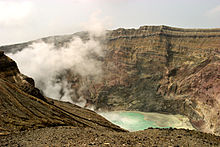 Mount Aso, one of the world's largest volcanic calderasIn towns near the frequently erupting volcanoes, there are shelters to protect yourself from volcanic bombs.
Mount Aso, one of the world's largest volcanic calderasIn towns near the frequently erupting volcanoes, there are shelters to protect yourself from volcanic bombs.Japan is prone to earthquakes (地震 jishin) which can sometimes cause tsunamis (津波 tsunami, pronounced with a tsu and not like English "sue"). On 11 March 2011, a 9.0 magnitude earthquake struck off the coast of Miyagi prefecture, triggering a very large tsunami and bringing havoc to the city of Sendai and the surrounding area. The quake (and its aftershocks) were palpable throughout Japan, with the death toll numbering over 15,000, mostly due to the tsunami. Every few days, somewhere in Japan is rattled by a quake large enough to be felt, but most of them are completely harmless. Japan is well-prepared for such disasters though, and has very strict building codes that require buildings to be engineered to withstand major earthquakes. Japan has an early warning system that detects earthquakes and notifies areas that will be affected, giving from a few seconds up to a minute's notice. Use this invaluable time to cover up before the actual jolt.
See our articles on earthquake safety and tsunamis to learn how to prepare.
If you are by the sea and experience even a moderate quake, look for tsunami warnings (also in English) on NHK TV (channel 1) and Radio 2 (693 kHz). Most tremors and small quakes will merit only a scrolling announcement in Japanese at the top of the screen. If you are near the sea and experience a major earthquake, evacuate to high ground immediately; do not wait for a warning.
Every neighborhood has an evacuation area, most often the local playground. Many schools are set up as temporary shelters. They will be labeled in English. If you are travelling with others, plan to meet there and be aware that portable telephones will likely not work.
There are lots of resources to learn about and prepare for disasters. It almost goes without saying, but this should be done in advance. Once a disaster strikes, you may have neither the time nor the ability to go online and read a lengthy document.
Disaster Prevention Portal Site – From the Ministry of Land, Infrastructure, Transport and Tourism Japan Official Travel App – The Japan National Tourist Organization's app includes safety information Disaster Preparedness Tokyo – Handbook from the Tokyo Metropolitan Government. Hundreds of pages about earthquake safety, disaster preparation, and survival. You can also purchase a printed copy from a number of retailers.Drug traffickingDrug laws in Japan are stricter than those in many Western countries, particularly for smuggling. The Japanese do not distinguish between hard and soft drugs, so possession of even personal-use quantities of soft drugs can land you a prison sentence of several years. This applies even if you consumed drugs outside of the country, or if it is proven that you aren't aware the drugs are in your luggage. Checking your luggage beforehand is strongly recommended to prevent issues like this.
If you have prescription drugs, check with the Japanese Embassy prior to your departure to find out whether or not your medicine is allowed in Japan. If it is illegal, they should also be able to give you information regarding what medicines you can buy in Japan to use in place of your prescription while you are there.
OtherAsian Giant HornetVolcanoes, storms and typhoons are primarily a potential issue if you are mountain-climbing or sailing, so check the latest information before heading out. Stick to designated footpaths in volcanic areas as volcanic gas may be an issue. Typhoons are rarely physically dangerous, but they still wreak havoc with planes, ferries, and even (if there are landslides) trains and buses.
There are venomous snakes called habu (波布) in Okinawa although not in unusual numbers. You are unlikely to be bitten by one, but if you are, seek medical help immediately as anti-venoms are available. If you are hiking in Hokkaido and Honshu, be aware of possible bear activity, especially in autumn. Attacks are rare, but in areas such as the Shiretoko Peninsula, attach bells to your backpack to scare them away.
Especially in the countryside, be aware of the Japanese giant hornet (大雀蜂 or 大スズメバチ ōsuzumebachi), a sub-species of the Asian giant hornet; it is about 4 centimetres (1.6 inches) long and can sting repeatedly and painfully. Every year, 20–40 people die in Japan after being stung by giant hornets. A hornet defending its nest or feeding spot will make a clicking sound to warn away intruders; if you encounter one, retreat. If you are stung, receive prompt medical attention, as prolonged exposure to the venom could cause permanent injury or even death.




